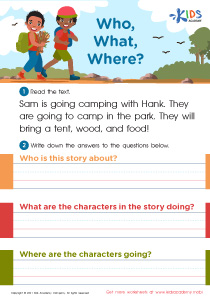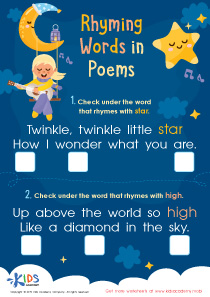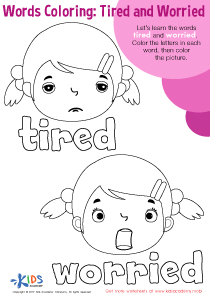Visual Perception Skills Reading Worksheets for Ages 4-6
4 filtered results
-
From - To
Enhance young learners' reading abilities with our Visual Perception Skills Reading Worksheets for ages 4-6. Designed to improve critical visual skills, these engaging and colorful worksheets focus on developing children’s ability to recognize patterns, differentiate shapes, and identify letters and words. By honing essential visual perception skills, these activities pave the way for stronger reading proficiency, ensuring your child is well-prepared for academic success. Perfect for both at-home practice and classroom use, our worksheets make learning fun and effective. Help your child gain a solid foundation in reading while boosting their confidence and enthusiasm for learning!
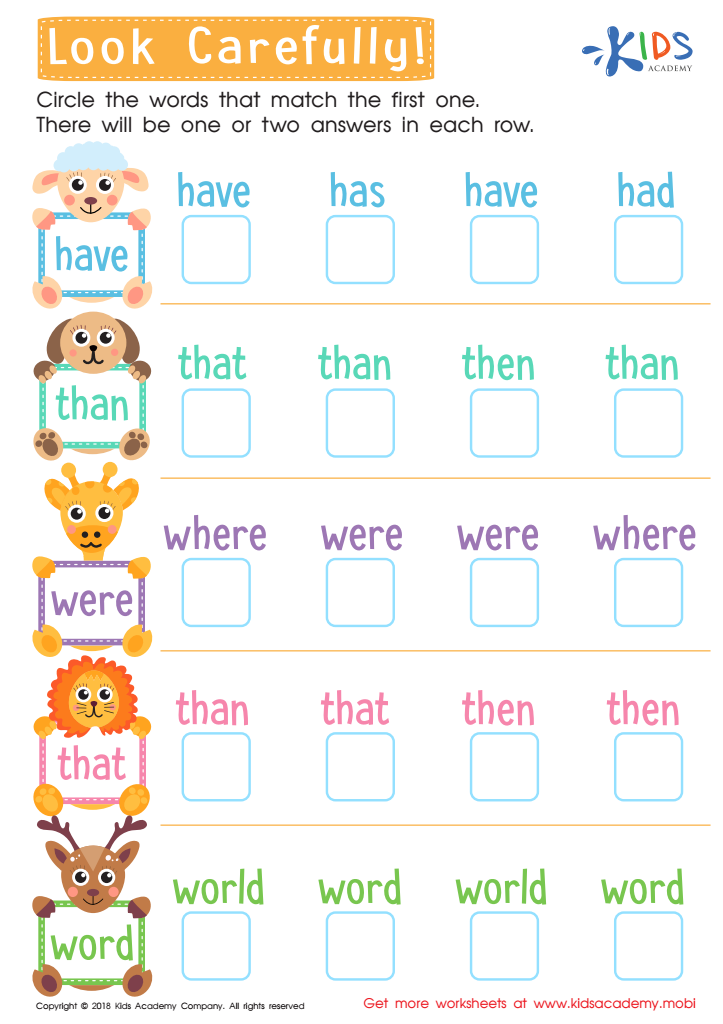

Look Carefully Worksheet
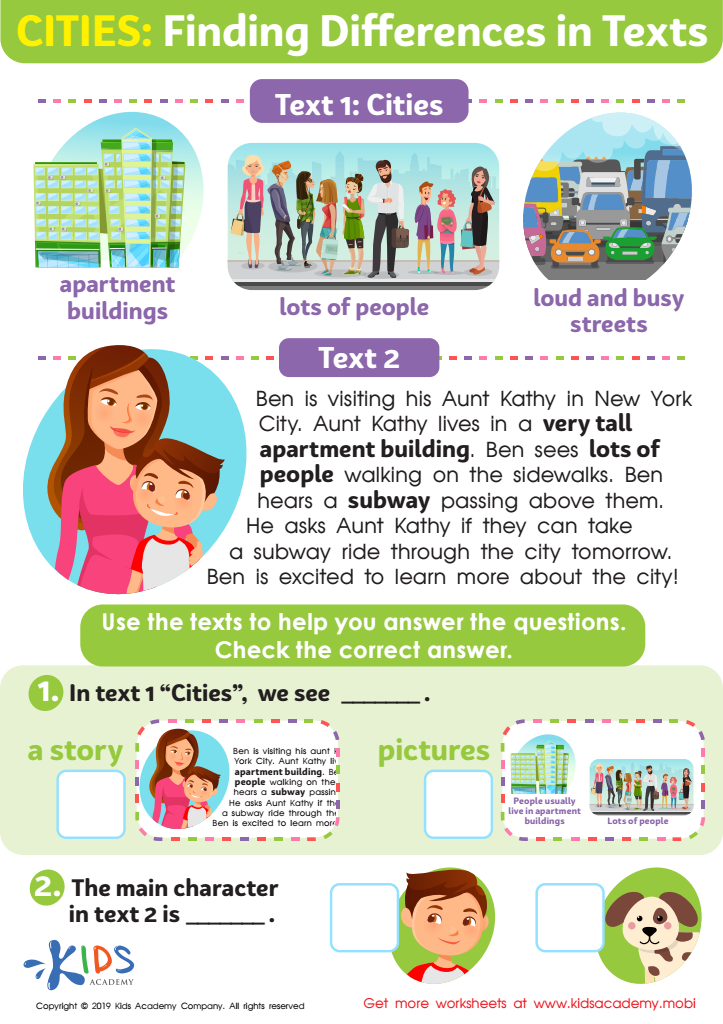

Cities: Finding Differences Worksheet
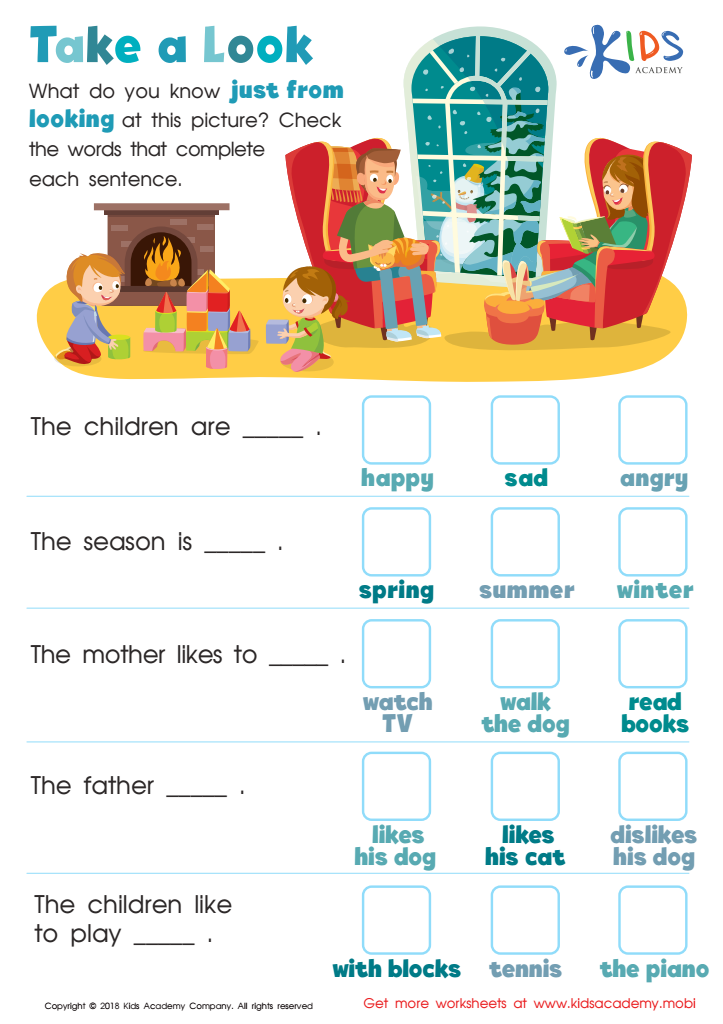

Take a Look - Part 1 Worksheet
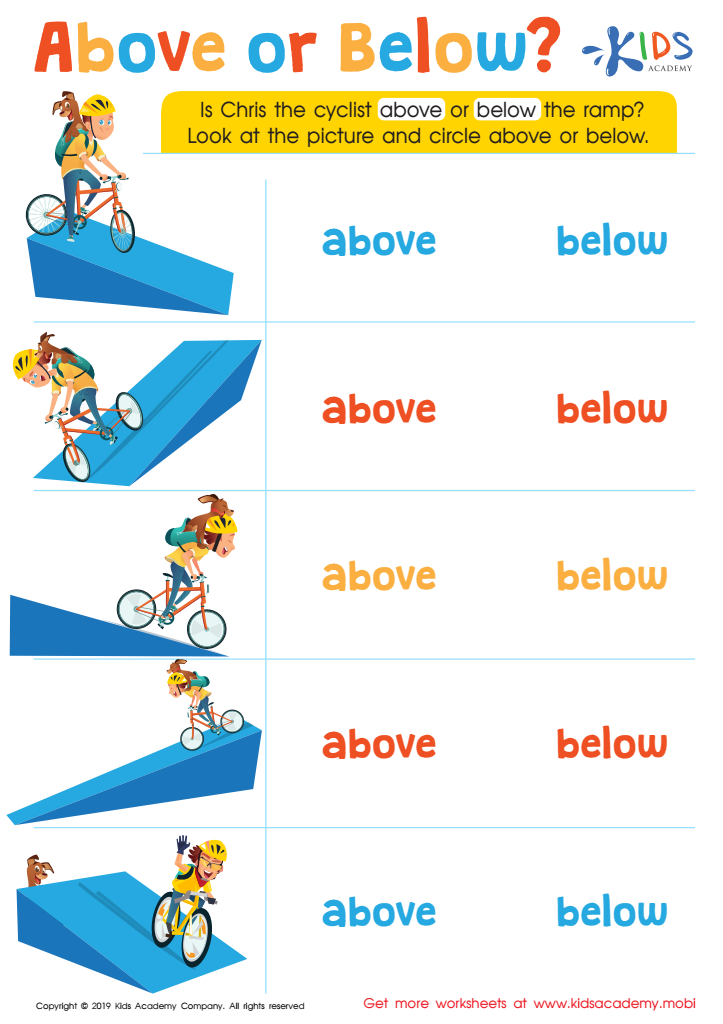

Above or Below? Worksheet
Visual perception skills are crucial for children aged 4-6 because they form the foundation of reading readiness and academic success. These skills enable children to interpret and organize visual information from the environment, which is essential for tasks like letter and word recognition, reading comprehension, and writing.
For a young child, the ability to distinguish between similar-looking letters (like 'b' and 'd' or 'p' and 'q') and identify patterns and sequences in text directly affects their ability to learn to read. Strong visual perception skills allow children to track text across a page, recognize familiar words quickly, and understand the spatial orientation of letters and words, leading to increased reading fluency.
Furthermore, developing these skills can boost a child’s confidence and motivation. When children can easily understand what they see, they experience less frustration and are more likely to engage in reading and learning activities. This, in turn, supports their overall cognitive development and can lead to better performance in other academic areas beyond reading, such as math (where recognizing shapes and numbers is crucial).
In summary, paying attention to visual perception skills in early childhood equips parents and teachers to identify and support any potential reading difficulties, fostering a positive and productive learning environment that paves the way for future academic and personal success.
 Assign to My Students
Assign to My Students











